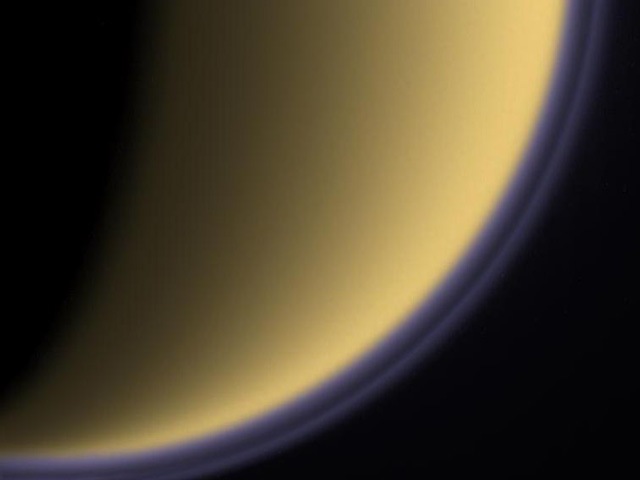Explanation: Most moons have no haze layer at all - why does Titan have two? Images from the Cassini spacecraft that slipped into orbit around Saturn last month confirm that the Solar System's most mysterious moon is surrounded not only by a thick atmosphere but also by two distinct spheres of haze. These layers are visible as purple in the above false-color ultraviolet image. Titan's opaque atmosphere is similar to Earth's atmosphere in that it is composed mostly of nitrogen. As energetic sunlight strikes high level atmospheric nitrogen and methane, trace amounts of organic compounds such as ethane and carbon dioxide appear to form. These and other complex organic molecules likely populate the detached haze layer. In December 2004, Cassini will launch the Huygens probe to land on Titan.
1999 2000 2001 2002 2003 2004 2005 2006 2007 2008 2009 2010 2011 2012 2013 2014 2015 2016 2017 2018 2019 2020 2021 2022 2023 2024 2025 |
Январь Февраль Март Апрель Май Июнь Июль Август Сентябрь Октябрь Ноябрь Декабрь |
NASA Web Site Statements, Warnings, and Disclaimers
NASA Official: Jay Norris. Specific rights apply.
A service of: LHEA at NASA / GSFC
& Michigan Tech. U.
|
Публикации с ключевыми словами:
Titan - cassini spacecraft - atmosphere - Титан - КА Кассини - атмосфера
Публикации со словами: Titan - cassini spacecraft - atmosphere - Титан - КА Кассини - атмосфера | |
См. также:
Все публикации на ту же тему >> | |
